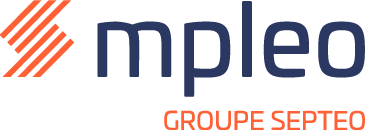
Human Capital Management: Understanding the Differences Between HRIS, HCM, and HRMS to Choose the Best Tool
Faced with new challenges, the HR function is rapidly evolving, taking on an increasingly strategic role. At the heart of this transformation is Human Capital Management (HCM), which aims to optimize talent development and engagement by making employees a key driver of company performance.
In this context, Human Resources management systems play a key role. But the differences between HRIS, HCM, and HRMS are not always obvious. How do you distinguish between these solutions? What do they have in common? And how can they contribute to an effective human capital management strategy?
What is the definition of an HRIS?
The term HRIS (Human Resources Information System) has been used since the 1970s to refer to software dedicated to administrative HR management. Initially, these systems focused primarily on automating repetitive tasks and centralizing data. They helped HR departments eliminate many tedious manual tasks and reduce errors associated with paper-based processes.
What are the main features of an HRIS?
- Core HR data management: recording and updating employee information (contact details, hire dates, contract info, etc.)
- Benefits and compensation management
- Payroll management: automatic salary calculation, accounting for overtime, bonuses, and deductions
- Time and activity tracking: tracking work hours, managing leave and absences
- Recruitment management: tracking applications and interviews
- Training management: centralizing needs and organizing training schedules
- Dashboards: tracking key HR metrics like absenteeism and turnover
Use case: What can an HRIS do?
Depending on the modules implemented, an HRIS can be used to manage candidate interactions, track employee hours and leave, and collect training requests. The data is centralized, simplifying payroll calculations and leave request processing. HR managers can also generate reports on absenteeism rates, recruitment process performance, and training evaluations.
What is the link between HRIS and human capital management?
An HRIS is very effective for administrative HR tasks—which is its primary function. By definition, however, it doesn’t address the strategic dimension of HR. Human capital management is not included in HRIS capabilities. Fortunately, other digital HR solutions make this possible.
What is the definition of HCM?
HCM (Human Capital Management) is a more strategic approach to HR than an HRIS. The term refers both to a human capital–focused HR strategy and the software solutions that support this strategy.
- HCM Strategy: Based on the idea that employees are not just resources to manage but a key asset for a company’s development and competitiveness.
- HCM Software: These integrated tools facilitate the implementation of the HCM strategy and offer more advanced features than a traditional HRIS, such as talent management, performance evaluations, and skills management.
HCM use case example
HCM can be used during employee performance evaluations. The tool gathers feedback, analyzes it, and adapts individual development plans accordingly—offering personalized training and tailored career paths. This promotes a culture of performance and continuous development.
HCM and human capital management
Unlike the HRIS, which focuses on administrative HR management, HCM software is designed for human capital management. It aims to maximize employee potential by enhancing their experience, boosting engagement, and developing their skills. As a result, administrative HR tasks become opportunities to strengthen employee motivation and commitment.
What is the definition of HRMS?
The term HRMS (Human Resource Management System) is often used interchangeably with HCM to describe HR management software. Like HCM tools, HRMS platforms combine the core features of an HRIS with strategic employee management capabilities. However, HRMS also includes intelligent technologies such as analytics and artificial intelligence (AI) to support data-driven decision-making.
Key features of an HRMS
An HRMS includes all the core HRIS features (data, payroll, benefits, time tracking, recruitment, and training), but goes further by offering:
- Advanced talent and performance management: digitized and customizable reviews, employee evaluations, goal management, and high-potential identification
- Skills management: skill mapping, gap analysis, training planning, and recruitment strategies aligned with business goals
- Predictive workforce modeling: forecasting labor needs and identifying risks of voluntary departures
- Smart technologies: use of analytics and AI to streamline data flow and automate HR processes
AI features in an HRMS: Examples
AI integrated into an HRMS automates repetitive tasks and offers valuable insights for improving human capital management:
- Enhanced job posting creation
- Matching roles with candidates based on identified skills
- Chatbots for answering frequent HR-related questions
- Automated internal skill detection and database enrichment
- Personalized training recommendations
- Predicting employee attrition risks
HRMS and human capital management
Like HCM software, HRMS offers a broader, more strategic approach than HRIS. It improves employee engagement and supports development.
Since HRMS integrates advanced analytics and AI features, it provides forecasting and data analysis capabilities—allowing HR departments to make informed decisions. This supports their role in managing human capital effectively.
Use case comparison: HRIS vs HRMS
For training and skill development, an HRIS helps collect needs, send invites/reminders, and track completion dates. An HRMS, on the other hand, evaluates training impact, recommends additional sessions based on identified gaps, and adapts training programs in real time using analyzed data.
Similarly, in analyzing voluntary employee turnover, an HRIS might simply record the numbers and reasons. An HRMS digs deeper, identifying common causes such as limited career opportunities or lack of recognition, allowing companies to adjust retention strategies and offer internal promotions to high-performing staff.
Takeaway | In conclusion
While an HRIS is a valuable tool for managing administrative HR tasks, HRMS software offers a more complete and strategic approach to Human Resources aligned with human capital management. It not only centralizes data but also enhances employee engagement, supports development, and enables data-driven decisions. For HR Directors and HRIS Managers, adopting an HRMS is a crucial step toward a more effective, people-centered HR strategy.
